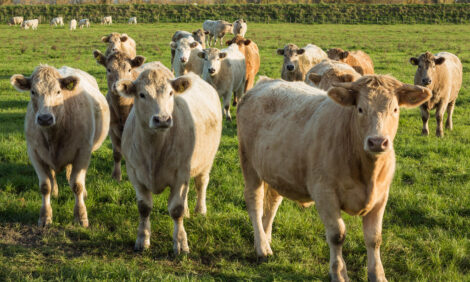



How Low Can the US Cattle Inventory Go?
US - The total number of US beef cattle has declined 14 of the last 16 years, with 2011 marking the sixth consecutive year of weakening numbers and the longest consecutive decline in history, said Tom Troxel, associated head-Animal Science for the University of Arkansas System Division of Agriculture.“When the US Agriculture Department announced the cattle inventory for January 1, one can only ask the question, ‘How much smaller can the US cattle herd get?’” he said.
“What does this mean to the consumer? USDA says beef and veal prices climbed by as much as 9 per cent in 2011, and the agency projects that costs will rise an additional 4.5 to 5.5 percent in 2012,” Mr Troxel said, adding that the higher prices for beef will affect consumer purchasing decisions.
“Restaurants are projecting that food prices will climb by about 4 per cent in 2012, about the same amount as in 2011,” he said. “Still, restaurants are expected to continue a trend toward smaller cuts of meat and price increases that will be watched closely by customers.”
John Barone, president of Marketvision, told “Nation’s Restaurant News” that he expected choice beef prices to rise 8 per cent compared to 2011.
Drought has “reduced cattle herds and caused a lot of feeder cattle to be marketed at lower weights, resulting in less overall beef, even less choice-grade beef and higher prices in 2012,” he said, adding that he expected the trend to continue into 2013.
The number of all cattle and calves in the US on January 1 was 90.8 million head, the lowest since 1952, according to the National Agricultural Statistics Service. In Arkansas, all cattle and calves were down 3 per cent to 1.67 million head.
“Severe drought across the state, especially in the southwest section of the states, is the primary reason for the decline in cattle numbers,” Mr Troxel said.
The US beef cow herd was down 967,000 head, or 3 per cent, to 29.9 million head. The beef head in Arkansas was down, too, but it declined 2 per cent from 940,000 head in 2011 to 920,000 head in 2012.
In other states:
- Texas beef cow numbers decreased by 13 per cent.
- Oklahoma decreased by 14 per cent.
- New Mexico decreased by 11 per cent.
There were some states that actually saw an increase:
- Idaho was up 5 per cent.
- Nebraska was up 6 per cent.
- Iowa was up 7 per cent.
- Michigan increased 10 per cent.
Another very interesting number is the 2011 calf crop.
“It is estimated to be 35.3 million head, down 1 per cent from 2010,” he said. This is the smallest calf crop since 1950.”
The Arkansas 2011 calf crop was estimated at 800,000 head, unchanged from 2010. “The big question is, how much will the 2012 calf crop will be affected due to the weather of 2011?” he said.
The smaller 2011 calf crop and increased number of cattle placed on feed in 2011 has resulted in a significantly smaller feeder and calf supply outside of feedlot.
“The result is cattle feeders are, and will continue to be, very aggressive in placing cattle into their feed yards from the available supply, which has been supportive to the higher feeder and calf markets,” Mr Troxel said. “Cattle prices are expected to very strong in 2012, and many see cattle prices to be strong for two to four years.
Across the United States, the number of dairy cows increased 1 per cent to 9.2 million head, but the number of dairy cows in Arkansas decreased 8 per cent from 12,000 in 2011 to 11,000 in 2012.
TheCattleSite News Desk


